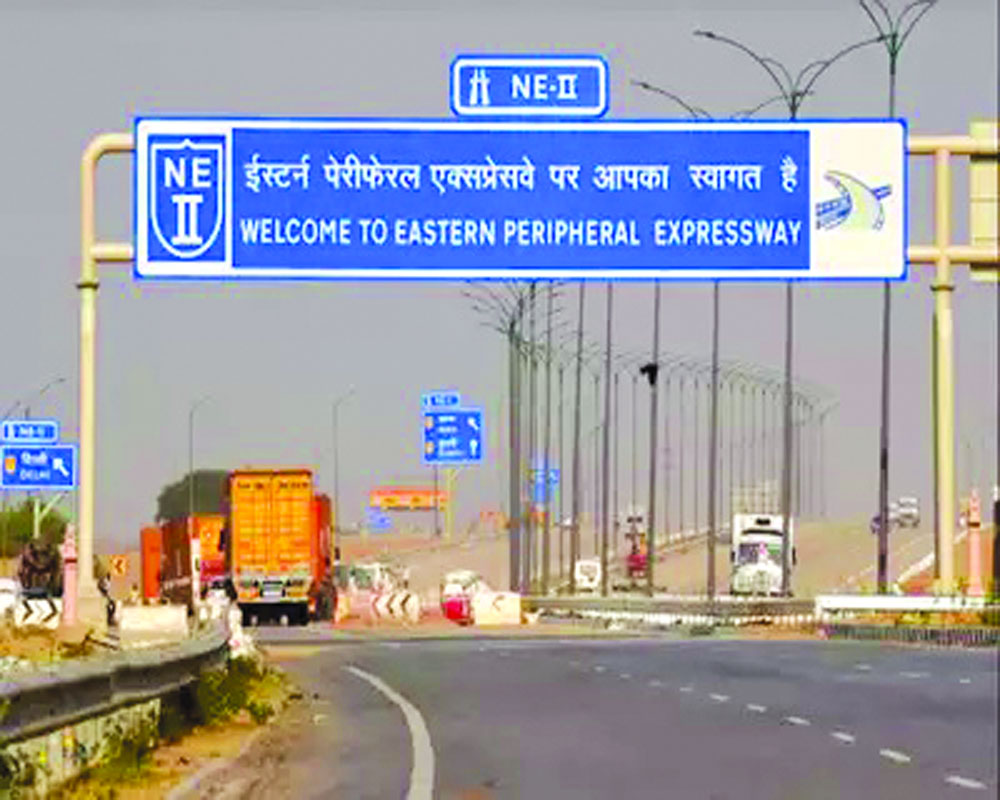A study done by the Central Road Research Institute (CRRI) shows that the Centre’s flagship project Eastern Peripheral Expressways (EPE) — popularly known as Palwal-Kundli-Ghaziabad expressway — appears to be not utilised much by the commuters due to lack of proper facilities such as proper signs, fuel stations, toilets, dhaba facility among others.
Study also shows that drivers due to lack of proper directions rely upon online applications like Google maps which has resulted in accidents.
According to the report, more than 15 per cent users faced confusion while entering the Expressway and more than 70 per cent faced directional confusion in areas (at interchange, National Highway (NH), State Highway (SH) ) around Expressway due to lack of proper display of signboards at entry and exit points.
“Apart from proper signboards, retro reflective chevron signs at all merging/diverging curves is missing. Lateral rumble strips should be installed specifically before traffic merging area on EPE to break the monotony of drivers. Further, it is necessary to provide truck lay-by on EPE for safety of parked vehicles and drivers of long hail trips,” says the report.
Nearly 40,000 vehicles are using the 135 kilometres long expressway close to the estimated target of 50,000 vehicles per day. But only 13 per cent of heavy goods vehicles are using the expressway. The Government aimed to divert about 25,000 to 30,000 HMV’s (heavy motorised vehicles) per day to EPE to cut the air pollution in the city. Further on average, about 10,000 vehicles are entering the EPE from different locations every day.
Further, the study shows there is no such large impact on Delhi traffic after the opening of EPE as only 11-13 per cent reduction in the traffic has been witnessed, that too at some points such as at Tikri (13 per cent) and KGT Singhu Border, Narela (11 per cent) but at major sections such as Badarpur border, the traffic volume has increased to six per cent.
“The Badarpur border has relatively low impact due to EPE as it’s from EPE entering at Palwal,” says the report.
While the CRRI report and expert say the expressways have the capacity of 10-15 per cent more vehicles than the aimed target of 50,000 vehicles.
“The main aim behind this project was to reduce air pollution in the Delhi by diverting the HMV’s vehicles, trucks, lorry, especially diesel vehicles. But as per survey, 61 per cent of the total vehicles passing the EPE are Light Motor Vehicles — cars. Moreover, the drivers need to be sensitised and encouraged to use this route,” said Ravindra Kumar, Principal Scientist and Head of the Department (HOD), Transportation Planning and Environment Division Traffic Building.
However, a high ranking official of the National Highway Authority of India (NHAI) claimed that the Expressway is used largely by the commercial and other vehicles and the traffic volume has also increased from 40,000 to one lakh. The set up of fuel station has also been initiated.
“NHAI has installed proper digital signs on both enter and exit points. Besides, proper signboards have also been installed on the EPE with directions to clear confusion of the driver. Further, the expressway is just two hours route so people do not need any dhaba facility like Murthal,” said an official requesting anonymity.
The NHAI official further added about six fuel stations will be set up on the EPE on 39 km (left and right), 83 km (left and right side of the expressways) and the other two on 95 km. “The construction of these fuel stations has been started and will be completed by next two months. Toilet facilities are available at toll booth,” added the official.
The six lane expressway was inaugurated in May 2018 by Prime the Minister Narendra Modi.


























